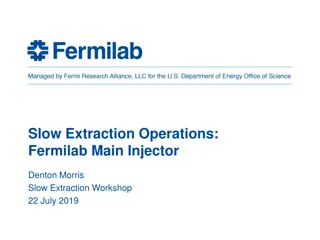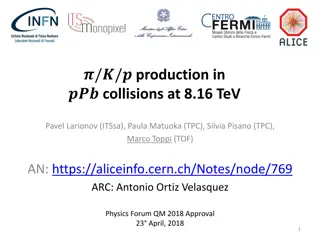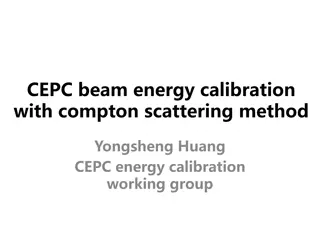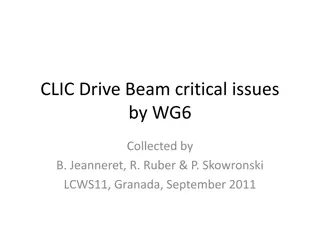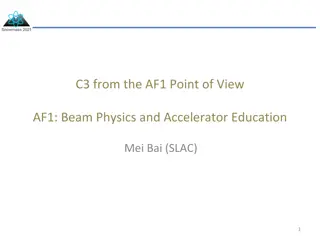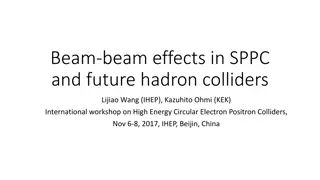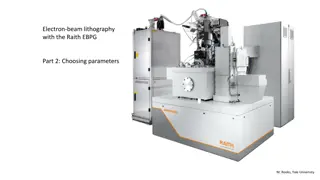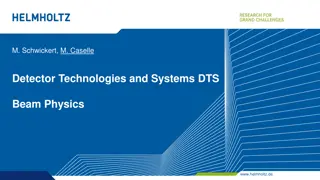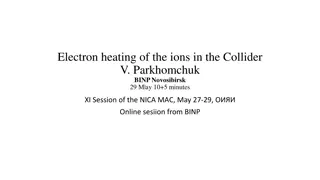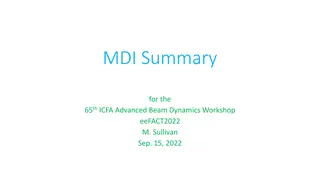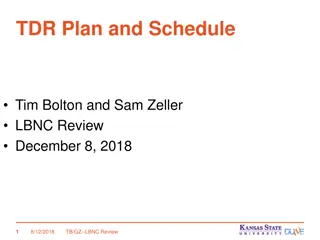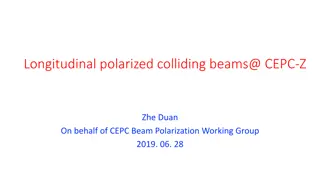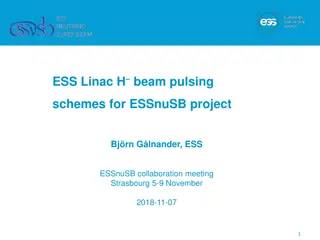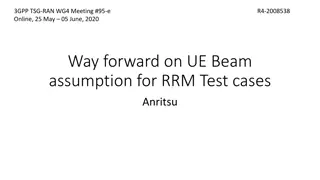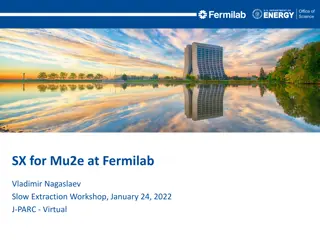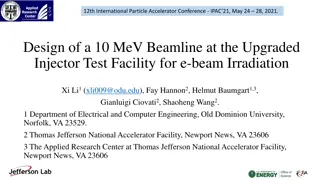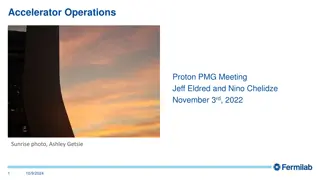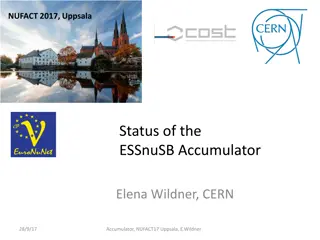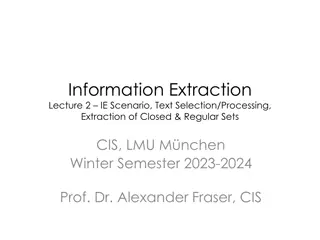Extraction Beam Loss at 1 TeV CM with TDR Parameters
This study conducted on August 25, 2014, explores the extraction beam loss at 1 TeV CM using TDR parameters. The research delves into disrupted beam distributions, beamline optics, electron and photon power losses, and energy spreads. Detailed analysis and simulations are presented to understand the effects of different beam parameters.
Download Presentation

Please find below an Image/Link to download the presentation.
The content on the website is provided AS IS for your information and personal use only. It may not be sold, licensed, or shared on other websites without obtaining consent from the author.If you encounter any issues during the download, it is possible that the publisher has removed the file from their server.
You are allowed to download the files provided on this website for personal or commercial use, subject to the condition that they are used lawfully. All files are the property of their respective owners.
The content on the website is provided AS IS for your information and personal use only. It may not be sold, licensed, or shared on other websites without obtaining consent from the author.
E N D
Presentation Transcript
EXTRACTION BEAM LOSS AT 1 TEVCM WITH TDRPARAMETERS Y. Nosochkov, G. White August 25, 2014
2 08/25/2014 Lattice and beam parameter options Extraction line with Lext* = 6.3 m SiD solenoid field with anti-DID and orbit correction downstream of IP 1 TeV CM energy 14 mrad crossing angle Disrupted electron and photon beam distribution at IP generated using Guinea-Pig Beam parameter options: A1 low beamstrahlung B1b high beamstrahlung (~2 times more energy loss compared to A1) ideal head-on collisions with vertical offset ( ) between the beams at IP adjusted for maximum disruption Electron and photon power losses for the disrupted beams are obtained using DIMAD tracking simulations
3 08/25/2014 TDR beam parameters
4 08/25/2014 Extraction line optics with Lext* = 6.3 m The beamline includes 5 collimators for protecting the diagnostics and limiting the beam size at dump window Shown -functions correspond to A1 disrupted beam
5 08/25/2014 Disrupted electron horizontal size at IP
6 08/25/2014 Disrupted electron vertical size at IP
7 08/25/2014 Disrupted electron horizontal angular spread at IP
8 08/25/2014 Disrupted electron vertical angular spread at IP
9 08/25/2014 Disrupted electron energy spread at IP Option B1b creates much longer energy tail IP y-offset increases the energy tail in both (A1 and B1b) options
10 08/25/2014 Photon horizontal angular spread at IP
11 08/25/2014 Photon vertical angular spread at IP
12 08/25/2014 Energy spread of electrons lost in the extraction line
13 08/25/2014 Electron power loss in option A1 with head-on
14 08/25/2014 Electron power loss in option A1 with y-offset
15 08/25/2014 Electron power loss in option B1b with head-on
16 08/25/2014 Electron power loss in option B1b with y-offset
17 08/25/2014 Photon power loss in the extraction line No photon losses in option A1 (with and without y-offset for 1.3e5 photons) Very small losses (only at two collimators) in option B1b
18 08/25/2014 Summary of beam loss Magnets Detectors Collimators Parameter option Warm (max per magnet) Synch- rotron Cheren- kov Cheren- kov SC Energy Dump-1 Dump-2 Dump-3 A1 0 85 W 0.28 kW 0.64 kW 88 W 1.8 kW 5.9 kW 2.5 kW 1.5 kW A1 y-offset 0 294 W 0.56 kW 6.3 kW 0.9 kW 4.0 kW 42 kW 17 kW 11 kW B1b 0 1.6 kW 4.0 kW 4.6 kW 3.5 kW 17 kW 43 kW 18 kW 15 kW B1b y-offset 0 1.9 kW 3.0 kW 37 kW 9.8 kW 17 kW 184 kW 56 kW 35 kW Beam loss in option A1 may be manageable (expert opinion is needed). The much higher losses with the y-offset are expected to be only for short periods of time. The IP offsets are expected to be continuously corrected in operation. Beam losses in option B1b are rather high due to the longer beam energy tail and larger angular spread at IP. Of particular concern are the losses on magnets and diagnostic. A better collimation may reduce the losses on magnets and diagnostic. Losses of photons generated in the collision are negligible (compared to electron losses) and limited to two dump collimators.


